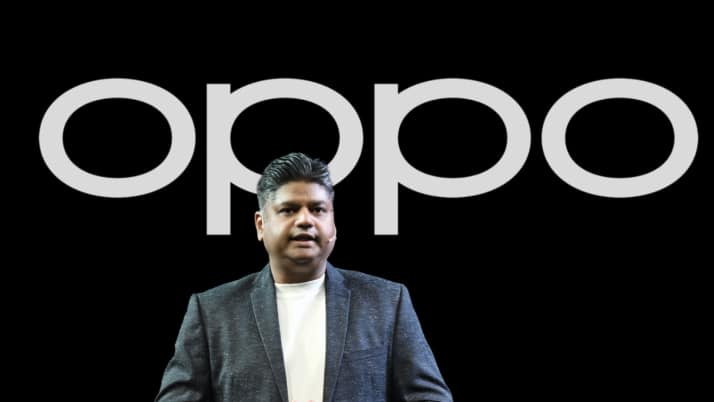Sushant Vashistha, Head of Product & Digital Marketing, OPPO India, talks about the brand’s evolving go-to-market strategy, the increasing importance of regional storytelling, and how Oppo plans to win consumer trust across formats, price points, and platforms, among others.

Sushant Vashistha, Head of Product & Digital Marketing, OPPO India. (Source: prhandout)
Even as India’s smartphone market grows increasingly crowded, OPPO is doubling down on a segmented marketing strategy aimed at building deeper brand salience across price tiers and geographies. With campaigns tailored for both premium and mid-range segments, the brand is focusing on differentiated storytelling, regional outreach, and retail-driven growth to consolidate its presence.
In FY26, the brand’s approach is expected to become more granular, with an increased emphasis on content localisation, influencer-led engagement, and omnichannel distribution. From launches like the Reno 14 to partnerships timed around key e-commerce sale events, OPPO is betting on a full-funnel strategy that combines national visibility with regional relevance.
In a conversation with BrandWagon Online, Sushant Vashishtha, Head of Product & Digital Marketing, OPPO India, talks about the brand’s evolving go-to-market strategy, the increasing importance of regional storytelling, and how OPPO plans to win consumer trust across formats, price points, and platforms, among others. (Edited Excerpts)
What kind of traction have you seen in FY25 so far, especially from events like Prime Day or other major digital sales?
We’ve had an extremely encouraging start. Both in terms of marketing and sales performance, OPPO has surpassed its targets during the first leg of the Prime Day sale. From a marketing standpoint, we’ve exceeded all major KPIs—brand lift, preference scores, consideration metrics, and even organic search volumes have seen a healthy jump. These are all leading indicators of brand engagement.
On the sales side, while the complete numbers will be released soon, I can confirm that we’ve already surpassed our internal sales targets for the first three days. This includes performance across regions and categories. The market response to our new product line, especially the Reno 14, has been very strong, and early partner feedback has been equally optimistic.
Speaking of strategy, what does your marketing mix look like across these different target groups?
It’s highly differentiated. For tier 2 and 3 markets, our approach is rooted in deep consumer insights. Every campaign begins with local market research and ends with validation of the impact. This helps us fine-tune the messaging, media consumption channels, and even visual storytelling for that cohort.
A good example is our Zindagi Ke Real Heroes campaign, which was designed to highlight how phones are tools for progress, especially for those who use them for work. For the K series, we leaned into student gaming culture and pop aesthetics. On the other end, the Awara Life campaign for Reno 14 tapped into nostalgia and spontaneity, emphasising the contrast between our fast-paced lives and the carefree college days. We brought in Ranbir Kapoor and a modern take on the classic “Awara” track to drive that sentiment home.
Another area of focus is multilingual content. Regional language integration has become critical. Whether it’s tech reviews in vernacular on YouTube Shorts or our Diwali campaign that captured four different celebrations across India, we’re designing campaigns that are culturally rooted.
In fact, for one of our recent campaigns, we worked with Pooja Hegde on regional cuts specifically for the Tamil audience. That kind of hyperlocal nuance is becoming more common in our playbook. OPPO has a strong base of loyal users across the country. As part of our campaign rollout, we always tap into these regional communities. They become our brand evangelists—especially in markets where word-of-mouth still plays a crucial role in decision-making. We activate them through engagement activities, giveaways, regional events and even content creation, which adds authenticity to our campaigns.
What’s OPPO’s stance on foldables? Is it still a niche in the Indian market?
Foldables are part of the global tech conversation and a growing category. We have the capability, experience, and globally successful models in the segment. However, in India, the foldable form factor is still evolving. It hasn’t yet become a mainstream choice. While our Find N2 Flip received an enthusiastic response when it launched in early 2023, we still see the bulk of consumer preference and industry sales coming from bar-style smartphones.
That said, foldables remain part of our roadmap, and we’re monitoring consumer behaviour closely. But for now, our primary focus continues to be on bar phones, where the demand is consistent and growing across segments.
OPPO seems to have a well-diversified product portfolio. How do you segment your target audience across categories and geographies?
India is a diverse market, and our strategy reflects that. Our portfolio is structured to cater to distinct consumer cohorts with specific life stages and aspirations. Here's how we look at it. OPPO’s smartphone lineup is tailored to diverse consumer needs. The A Series offers reliable, affordable options for budget-conscious users in smaller towns. The K Series targets students with performance and gaming features. The F Series blends style and utility for young hustlers. The Reno Series delivers premium design and camera quality for urban professionals, while the flagship Find Series caters to achievers seeking top-tier innovation.
Each of these series has its unique audience, and we tailor both product features and marketing strategy accordingly.
We’ve also noticed OPPO in traditional media recently—print, outdoor, and even TV. How do you balance that with digital?
While our core audience—18 to 35 years old—is digital-first even in smaller towns, traditional media still has a place. We deploy print and outdoor in a targeted manner, especially in localised campaigns. If a region is a high-potential sales hotspot, then a regional-language print ad or a strategic OOH execution makes sense.
TV and CTV are still in the mix, but not as an always-on channel. We activate them around product launches or festive spikes. For us, digital is the foundation, but traditional channels are used surgically to amplify impact in the right markets.
Could you give us a rough budget split between digital, traditional, and influencer marketing?
It’s difficult to pin down a single number because our media mix varies by product series and market. For instance, a K series campaign will have a very different split compared to a Find series launch. However, digital does take up the lion’s share of our budget across the board, and influencer marketing is a key component, especially when trying to build cultural relevance among younger audiences.
We’ll be happy to share a more detailed series-wise breakdown separately.
How does your sales split look between premium and affordable devices?
For most brands in India, the bulk of the volume still comes from the sub-₹30,000 or sub-₹40,000 price bracket. That’s true for OPPO as well. Affordable smartphones continue to dominate in terms of sheer volume, while premium offerings like the Reno and Find series play a more strategic role in driving brand perception and innovation.
That said, sales distribution is not static. During Diwali, a premium model might lead. During back-to-school or student seasons, it might be the K series. The product cycle and campaign timing determine which series takes the lead.
What does your distribution mix look like between online and offline?
We are predominantly offline-first, and that’s a conscious choice. Tier 2 and 3 cities continue to rely heavily on physical retail, where consumers can touch, feel, and understand the device. Trust is built face-to-face, and retail staff play a critical role in guiding purchases.
Of course, we work closely with online marketplaces, especially for models that have a digitally native audience. But offline retail remains central to our business model, and we continue to strengthen our relationships with general trade, modern trade, and NBOs.
Will we see more exclusive OPPO showrooms opening in India?
We’re currently evaluating our exclusive showroom strategy, but nothing has been formalised yet. Our focus remains on strengthening existing retail partnerships that have been instrumental in OPPO’s journey over the last decade. You can expect more clarity on this in the coming quarters.
By continuing you agree to our Privacy Policy & Terms & Conditions
